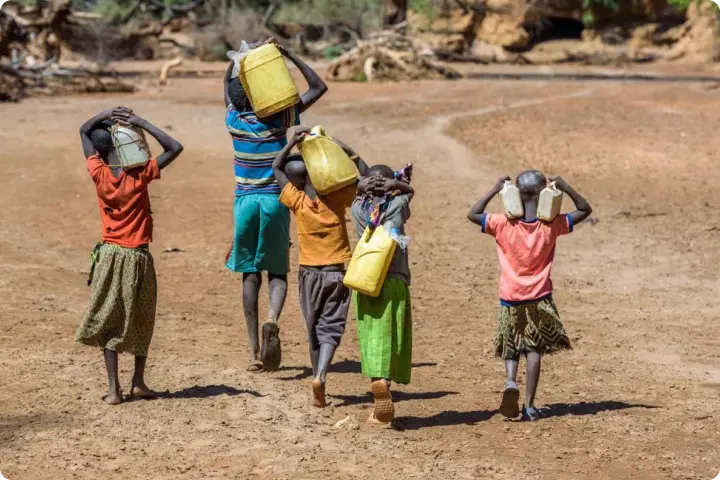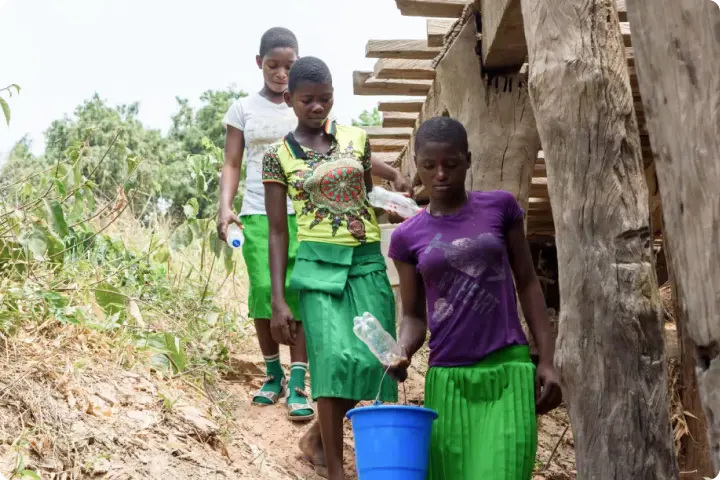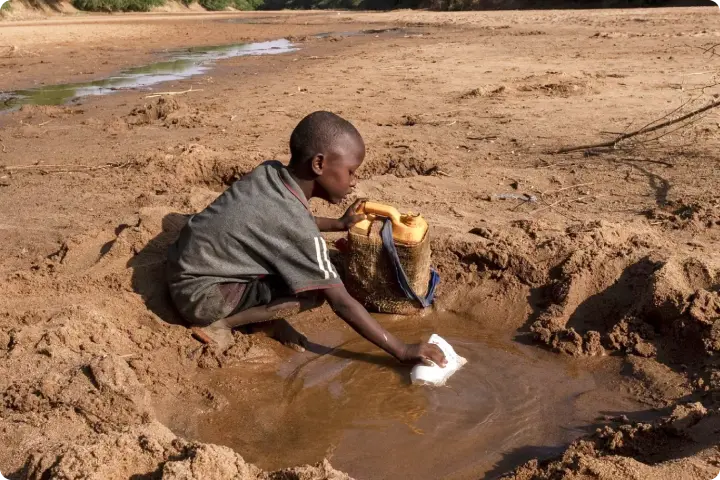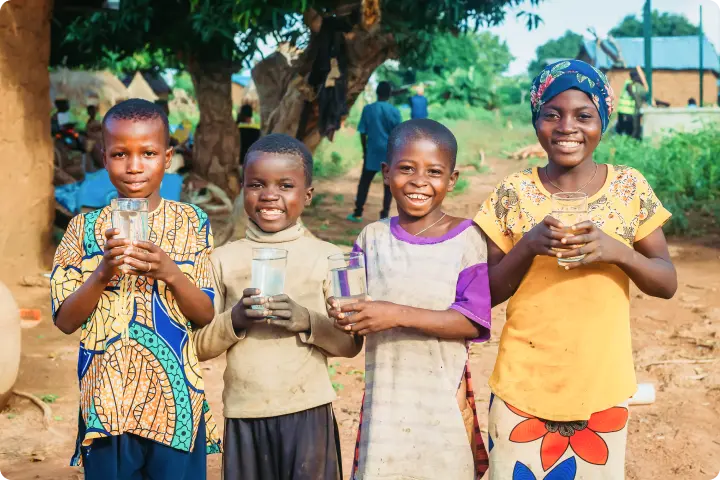A Child’s Journey Before the School Bell
Every morning, Mary walks nearly four kilometers before sunrise.
Not toward school, but toward a shallow stream that often dries up during the dry season. Her yellow jerrycan is almost half her size, and by the time she returns, the school bell has long rung. Her uniform remains folded on the bed.
Mary is only 11.
And like millions of children worldwide, her classroom is the open road to the water source.

An estimated 270 million children are currently out of school – nearly one in every six of the world’s school-age children.
While poverty, conflict, and inequality remain visible culprits, water poverty silently fuels this crisis, which could be one dry borehole and one missing toilet at a time.
1. Time Lost to Water Collection
In many rural communities, children – especially girls- walk for hours daily to fetch water. Those hours translate to lost learning and lost childhood.
UNICEF’s field work in Nigeria shows that when clean water is provided close to home, school attendance increases dramatically.

2. Schools Without Water Are Schools Without Dignity
Even when children reach school, many find no clean water, no toilets, and no hygiene facilities.
According to the 2024 WHO/UNICEF JMP Report:
23% of schools globally lack basic drinking water
33% lack basic hygiene facilities
Without WaSH access:
Children fall sick more often
Girls stay home during menstruation
Dropout rates increase
A study in Kenya revealed that latrine cleanliness alone significantly influenced attendance rates – proof that small infrastructural changes create massive educational impact.
3. Waterborne Illness Keeps Children Out of Class
Unsafe water leads to diarrhea, typhoid, and parasitic infections – all of which cause school absenteeism and learning delays.
The World Health Organization reports that diseases linked to unsafe water kill more children annually than malaria, measles, and HIV/AIDS combined.
Even survivors often suffer from malnutrition and stunting that impede brain development, further reducing learning capacity.
When Water Denies Equality
For millions of girls, water poverty translates into education poverty.
In schools without private toilets or menstrual hygiene facilities, girls skip classes or drop out entirely.
UNESCO estimates that 1 in 10 African girls miss school during menstruation because they cannot manage it with dignity.
The outcome? Lost education, early marriage, and limited opportunity.
When we give girls clean water, we give them back their futures.
Nigeria: The Case Study of a Double Crisis
Nigeria stands at the intersection of water poverty and education exclusion:
Over 10.2 million children of primary school age are out of school.
69 million Nigerians lack access to safe water
110 million lack basic sanitation.
In these communities, each failed borehole represents not just lost water – but lost lessons, lost confidence, and lost potential.
Water as an Education Strategy
At Fairaction, we design people-powered, climate-resilient water systems that improve both learning and living conditions.
Our approach integrates:
Sustainable water access at schools and homes
Community-led management and maintenance
Climate-smart designs to withstand droughts and floods
In one of our pilot communities, school attendance rose by over 30% within a year after constructing our smart water infrastructure and providing hygiene education.
When the environment changes, behavior changes, and hope returns.

Building the Water and Education Alliance
We cannot separate water access from learning outcomes.
To achieve Sustainable Development Goals, particularly SDG 4 (Education) and SDG 6 (Water & Sanitation), we must invest in integrated solutions.
Here’s what works:
✅ Embed WaSH in every school investment.
✅ Prioritize girls’ menstrual dignity.
✅ Fund community-led maintenance systems.
✅ Integrate climate-smart water technology.
Education funds that ignore water are building schools on sand.
Join the Movement
If every child deserves a classroom, every classroom deserves clean water.
No child should walk miles for water before learning the alphabet.
No girl should drop out because her school cannot manage her dignity.
No community should be left behind by dry taps and broken toilets.
Together, we can change this.
💧 Join the Water and Education Alliance.
You can donate to Fairaction today to bring clean water, dignity, and hope to classrooms across Africa.
👉 Contact Us to Collaborate.